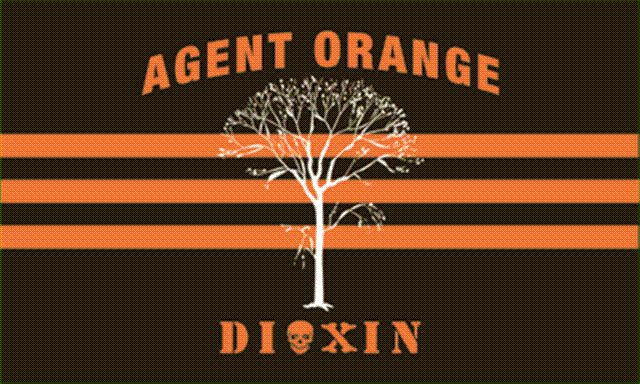 – Traitors like U.S. Sens. James Webb and Richard Burr aside consciousness is flowering amid tragedy –
– Traitors like U.S. Sens. James Webb and Richard Burr aside consciousness is flowering amid tragedy –
By Susan V. Berresford, convener of the U.S.-Vietnam Dialogue Group on Agent Orange/Dioxin
The war in Vietnam ended more than 35 years ago, but Trinh Luc, 18, is still feeling the effects of Agent Orange, a defoliant used by the U.S. military. Totally disabled since birth with mental deficiencies, violent tremors and muscle degeneration, he lives in rural Vietnam with his mother, 59, who was a volunteer cook with Vietnamese troops in the jungle mountains during the war and recalls being sprayed several times. Her skin is still blotched and bumpy with chloracne.
Agent Orange, it seems, is still causing fresh harm to innocent newborns and adults in Vietnam, not to mention its harm to war vets on both sides of the Pacific. The good news is that we can stop this nightmare, and at a reasonable cost.
Doing so would be in the best American tradition of humanitarian care, and would help address the remaining shadow on the relationship between our two countries. An action plan is now in hand that comes out of another valued tradition — a public-private partnership.
By the end of the war in 1975, 2.5 million U.S. military personnel had served in combat zones where many were exposed to Agent Orange’s toxic contaminant, dioxin. Upon returning home, many began reporting unusual illnesses: chloracne, several forms of cancer, diabetes, and birth defects in their offspring.
After decades of controversy, advocacy, lawsuits and research, the U.S. Department of Veterans Affairs now provides Agent Orange-related benefits to any U.S. military veteran who had his boots on the ground in Vietnam or served on particular ships offshore and suffers from any of 12 medical conditions. Although exact figures are not available on spending for Agent Orange/dioxin-related conditions, the U.S. government paid out $15.3 billion last year in disability benefits to more than 1 million Vietnam veterans, many of whom were exposed to herbicides. Debate continues over possible additions to the list of eligible illnesses.
As a recent study by the National Organization on Disability noted, more should be done for these vets, such as outreach to connect them and their families with care providers; medical education for health practitioners and disability-related service agencies; expanded care for affected children and grandchildren; and a new and robust research effort.
But what about Vietnam?
Millions of Vietnamese were exposed like Trinh Luc’s mother to Agent Orange/dioxin, some repeatedly, and 3 million are estimated to have suffered health effects, including 150,000 of today’s children who have profound birth defects, like Luc. Dioxin “hot spots†around former U.S. military areas continue to contaminate people. A land area the size of Massachusetts was sprayed and a large proportion is still degraded from the defoliation campaign. Vietnam gives small subsidies to its affected veterans and operates hospitals and clinics, but its resources do not meet the need.
In 2007 I convened a binational, public-private coalition of distinguished scientists and citizens, the U.S.-Vietnam Dialogue Group on Agent Orange/Dioxin, to work on the Vietnamese face of the issue. Funded by the Ford Foundation and housed at the Aspen Institute, the group explored what could be done, reviewed pilot projects, consulted widely and testified before Congress.
In June, the Dialogue Group issued a plan of action for assistance to Vietnam, so dioxin-contaminated soils could be cleaned, damaged ecosystems repaired and services expanded for people with disabilities. Costing $300 million over 10 years, the plan calls for supporting people with disabilities and gives highest priority to starting cleanup in Da Nang, Phu Cat, Bien Hoa and the other most dangerous hot spotss U.S. and Vietnamese officials hailed the plan as a blueprint for scaling up successful pilot projects.
It is time to ensure that the resources needed will now be mobilized from government, foundations, individuals and the growing U.S. business community in Vietnam. This is an auspicious year to get started — the 35th anniversary of the end of the war, the 15th year since re-establishment of diplomatic relations between our two nations, and the 1,000th anniversary of the founding of Hanoi.
A broad public-private partnership would respond to the human suffering in Vietnam in a humanitarian spirit. It would follow the American tradition of generosity toward former adversaries, and aiding men and women around the globe who struggle for well-being. And it would heal wounds and address a legacy that haunts both nations.
Let’s move now to take care of this unfinished business.
Susan V. Berresford is the former president of the Ford Foundation and convener of the U.S.-Vietnam Dialogue Group on Agent Orange/Dioxin. This column was provided via the American Forum, a nonprofit, nonpartisan, educational organization.
ATTENTION READERS
We See The World From All Sides and Want YOU To Be Fully InformedIn fact, intentional disinformation is a disgraceful scourge in media today. So to assuage any possible errant incorrect information posted herein, we strongly encourage you to seek corroboration from other non-VT sources before forming an educated opinion.
About VT - Policies & Disclosures - Comment Policy



